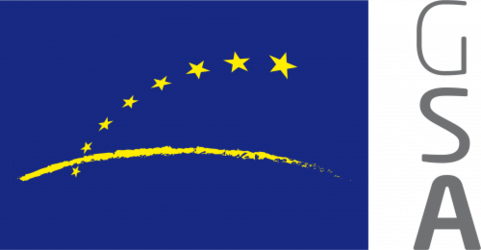Le Bourget contracts complete Galileo network
As Europe prepares for October’s launch of the first Galileo satellites, a worldwide ground network is being put in place. Contracts signed today at the Paris Air & Space Show cover satellite control and the systems needed to generate Galileo services.
Europe’s satellite navigation system will begin to take shape in space later this year, when the first two Galileo In-Orbit Validation satellites are launched by the first Soyuz flown from French Guiana.
But Galileo is more than just satellites in space: a complex terrestrial infrastructure will monitor the constellation and maintain Galileo navigation services.

Out of six Work Packages for Europe’s satnav system to reach full operations, four are already in place. The remaining two were signed this afternoon during the Paris Air & Space Show at Le Bourget.
The signing ceremony was introduced by Laurent Wauquiez, French Minister for Economic Affairs, and Jean-Jacques Dordain, ESA Director General.

Work Package 2 was signed by Reynald Seznec, CEO of Thales Alenia Space France, and Didier Faivre, ESA Director for Galileo and Navigation-related Activities.
Work Package 3 was signed by Colin Paynter, Managing Director of EADS Astrium, and Director Faivre.
Antonio Tajani, European Commission Vice President for Industry and Entrepreneurship, hailed the signings as an important milestone for Galileo.
Galileo’s ground control
Work Package 3 covers completion of the Ground Control Segment – the network to monitor and control the satellites and the ground elements. The current system can handle the constellation up to the 18 satellites of the first operational phase, expected by mid-decade.
The control segment already deployed for the first four satellites consists of a Galileo Control Centre in Oberpfaffenhofen, Germany and two Telemetry, Tracking and Command facilities in Kourou, French Guiana and Kiruna, Sweden.

The control centre oversees the satellites and intervenes as needed, with routine ‘housekeeping’ commands generated automatically along with critical commands from human operators.
In preparation for the first operational stage, the second control centre in Fucino, Italy will be added, as well as two further ground stations in Noumea, New Caledonia and St Denis, Reunion Island.
Galileo’s mission segment
Work Package 2 covers completion of Galileo’s Ground Mission Segment, which generates all the products for supporting navigation services and maintaining their accuracy. The current system can handle the constellation up to the first operational phase.
Users derive their three-dimensional position and local time by measuring their range from four or more satellites. High levels of service accuracy are provided by extremely accurate onboard atomic clocks coupled with the precise position of each satellite.
But both the clocks and the satellites themselves are subject to drift. So a network of Ground Sensor Stations monitors the timing accuracy and orbital position of all the satellites and their signal quality.

This information is passed to the control centre for updating the orbits and synchronising their time. The resulting corrections are then relayed to the satellites via a network of uplink stations to be disseminated as part of Galileo’s navigation signal to users.
The Ground Mission Segment also forwards search and rescue signals detected by the constellation to the authorities and can disseminate commercial data as part of Galileo’s Commercial Service.
The current mission segment for the first four satellites consists of a control centre in Fucino, eight sensor stations around the world on European territory and five similarly distributed uplink stations.
For the first operational phase, the mission segment will also be added to the Oberfaffenhofen control centre – so the two control centres will be redundant– as well as eight more uplink stations.















 Germany
Germany
 Austria
Austria
 Belgium
Belgium
 Denmark
Denmark
 Spain
Spain
 Estonia
Estonia
 Finland
Finland
 France
France
 Greece
Greece
 Hungary
Hungary
 Ireland
Ireland
 Italy
Italy
 Luxembourg
Luxembourg
 Norway
Norway
 The Netherlands
The Netherlands
 Poland
Poland
 Portugal
Portugal
 Czechia
Czechia
 Romania
Romania
 United Kingdom
United Kingdom
 Slovenia
Slovenia
 Sweden
Sweden
 Switzerland
Switzerland




























